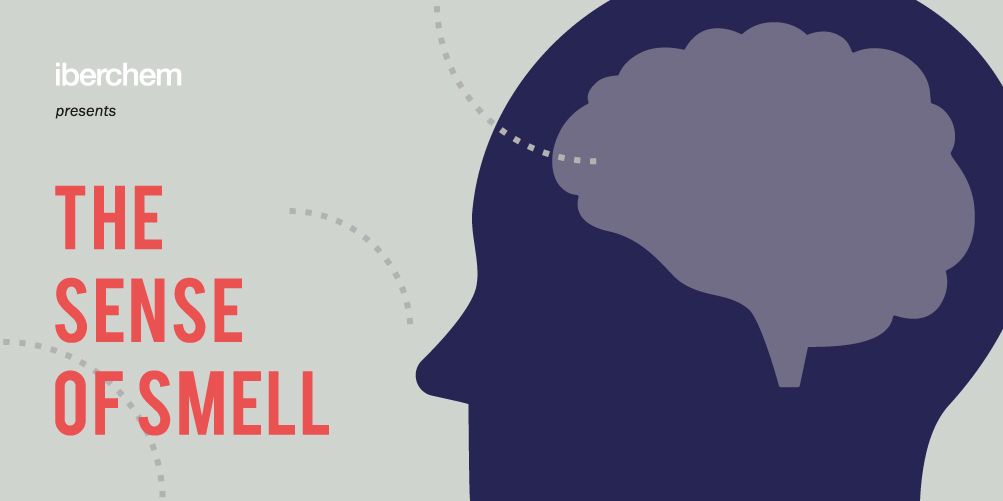El enigma del olor: ¿cerebro o nariz?

¿Puede reconocer cientos de perfumes? Cuando entra en un lugar, ¿lo primero que detecta es cómo huele?
Lo que la mayoría de la gente entiende por la palabra olor se refiere en realidad a miles de moléculas que activan diminutos sensores en nuestras fosas nasales.
Decir que olemos con la nariz es simplificar demasiado el asunto: en primer lugar, porque la nariz no es más que la ubicación de nuestros receptores olfativos, y es nuestro cerebro el que almacena la información que nos dice qué es lo que estamos oliendo. En segundo lugar, porque nuestro sentido del gusto también tiene mucho que ver con este proceso. Juntos se conocen como los sentidos químicos. La información sobre los olores llega a nuestro cerebro tanto por la nariz como por la boca activando el epitelio olfativo.
Centrándonos en nuestro sentido del olfato, es en el interior de la nariz donde se produce la «transducción química» que convierte las moléculas de olor que detectamos en señales eléctricas que recibe el cerebro.
¿Sabías que la investigación sobre el olfato ganó un Premio Nobel en 2004?
No fue hasta los años 90 cuando dos científicos estadounidenses hicieron un gran descubrimiento que explicaba cómo es posible que podamos percibir sustancias químicas como olores. Los biólogos Richard Axel y Linda Buck ganaron el Premio Nobel de Medicina en 2004 por sus descubrimientos sobre el sentido del olfato.
Descubrieron que alrededor del 3% de los genes humanos (aproximadamente 1000) contienen información sobre el olfato. Gracias a estos genes se desarrollan los receptores olfativos en las membranas de la nariz. Lo novedoso de su descubrimiento fue la constatación de que los receptores no se activan todos a la vez cuando perciben una molécula de olor, sino que se activan distintos receptores reaccionando a distintas moléculas. Es decir, que una molécula de olor sólo es percibida por el receptor programado para esa molécula, y sólo ese receptor transmite la información al cerebro. Las moléculas y los receptores deben encajar como una cerradura y una llave. El sistema nervioso interpreta cada combinación como un olor diferente. Una vez activados, envían la información al bulbo olfatorio situado en el cerebro, que recibe la información, la procesa y la almacena.
¿Cuántos olores podemos identificar?
El sentido del olfato de los humanos se transmite genéticamente y, a lo largo de la evolución, ha disminuido en comparación con otros seres vivos. Los perros, por ejemplo, tienen cuarenta veces más superficie cerebral dedicada al olfato. Los humanos tenemos menos porque hemos priorizado otras funciones cerebrales, como la visión en color, que la evolución consideró más útiles para el modo de vida de nuestra especie.
En cuanto al número de olores que las personas podemos detectar, no hay consenso científico; quizá haya que esperar a un segundo Premio Nobel para resolver algunos misterios que aún rodean a este sentido. A falta de un número concreto, y teniendo en cuenta que la capacidad de detectar olores es un don tan individual como tener buen oído para la música, es cierto que se puede entrenar el olfato. Los perfumistas, por ejemplo, entrenan su cerebro para ampliar la gama de olores que pueden reconocer y la velocidad a la que pueden hacerlo. La forma de hacerlo parece sencilla: se trata de asociar olores con recuerdos o pensamientos. Sin embargo, el número de olores que se pueden memorizar es infinito. Por eso la carrera de perfumista es un largo proceso de aprendizaje, de desarrollo, descubrimiento y formación continuos.
Gracias a la forma en que nuestro cerebro procesa la información procedente de los receptores, la memoria humana puede almacenar los olores de miles de combinaciones de moléculas aromáticas. Involuntariamente, cada vez que las moléculas correctas activan la combinación de receptores que han percibido ese olor antes, nuestro cerebro reconoce esa combinación y podemos ser enviados directamente a nuestra clase en el colegio o a los dulces caseros de nuestros abuelos… Pero nuestra conexión emocional con los olores es otra cosa, y de eso hablaremos más adelante.
